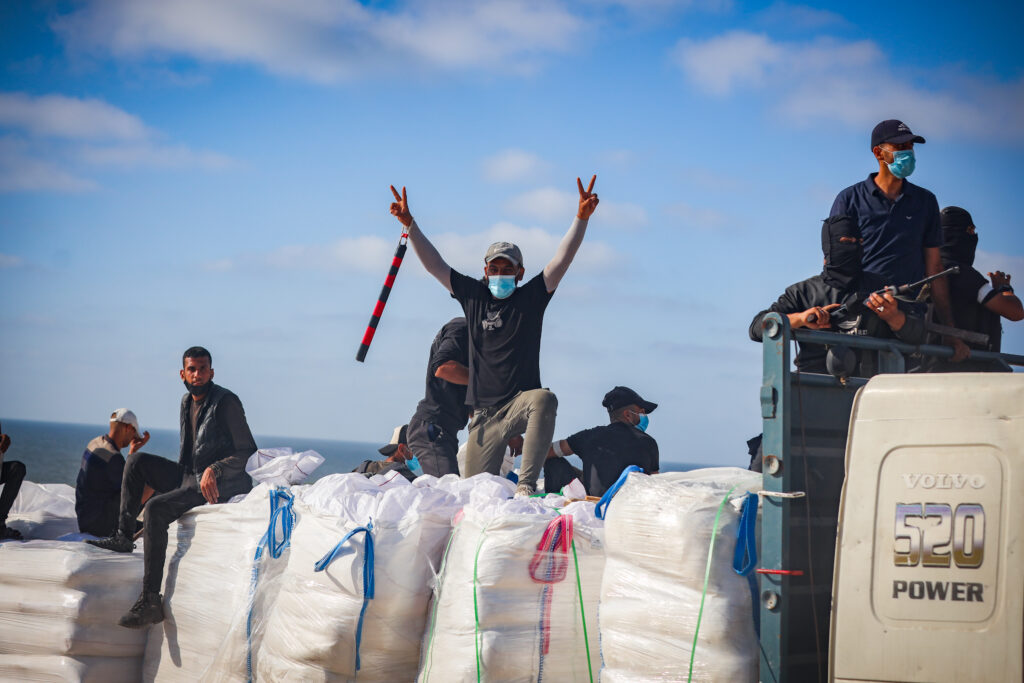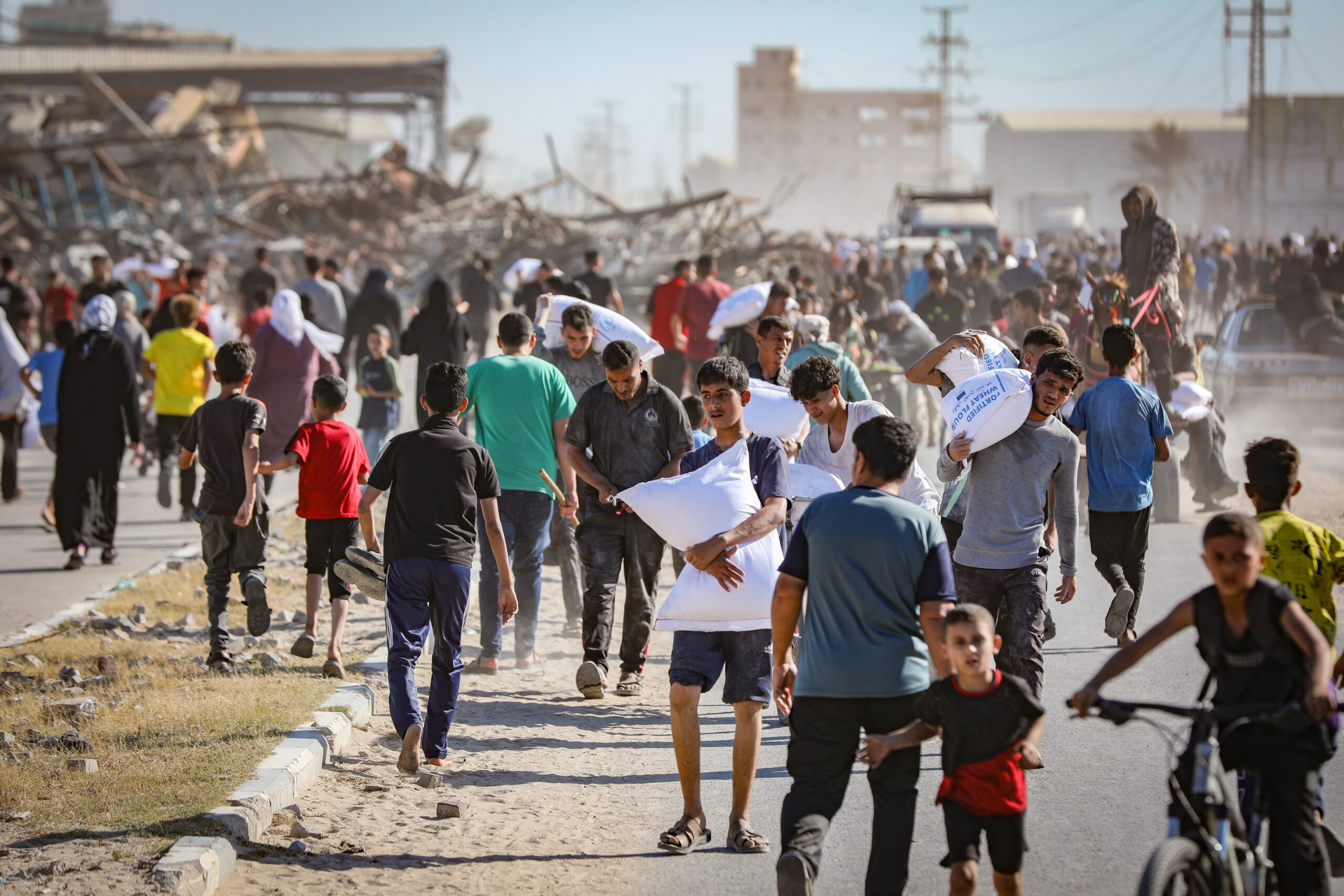As Gaza’s humanitarian disaster deepens, a shocking new development underscores the true obstacles to effective aid delivery: Hamas has reportedly placed bounties on the heads of humanitarian workers—including American security personnel and local Palestinian staff—operating under the U.S.- and Israeli-backed Gaza Humanitarian Foundation (GHF). According to GHF, these threats are part of an escalating campaign by Hamas to sabotage the only consistently functioning aid distribution system in the enclave.
The reports, confirmed by GHF in statements to Fox News Digital, reveal that cash rewards are being offered by Hamas to anyone who injures or kills workers associated with the foundation. “Hamas has placed bounties on both our American security personnel and Palestinian aid workers—offering cash rewards to anyone who injures or kills them,” GHF wrote in a statement. The organization also confirmed that 12 of its local staff had already been murdered, and others tortured, as part of Hamas’s ongoing campaign.
These targeted attacks, which have also included the positioning of armed Hamas operatives near humanitarian zones, reflect the terror group’s broader effort to strangle any aid it cannot control or tax. U.S. Ambassador to Israel Mike Huckabee harshly criticized the international community’s silence, writing, “Hamas has put a bounty on the heads of everyone at GHF—Gazans and Americans. The UN remains SILENT.”
Behind these violent threats lies a calculated strategy. Hamas has long hijacked aid intended for Gaza’s civilian population, turning international humanitarian efforts into a black-market enterprise. Israeli military intelligence has documented how Hamas intercepts shipments of food and medical supplies—often provided free by international donors—and resells them at inflated prices. Flour, which was meant to be distributed at no cost, has been sold for as much as 120 shekels per bag.

These practices are not merely opportunistic looting by desperate individuals. They form part of a systemic Hamas-controlled operation designed to enrich the terror organization and extend its grip over the population through manufactured scarcity. Price surges in areas where no aid distribution occurs, compared to drops in areas reached by GHF, further demonstrate Hamas’s manipulation of supply and demand for profit and control.
The theft of nearly 100 aid trucks in just one weekend triggered immediate shortages and a spike in prices in central Gaza, underlining the real cost to civilians. As GHF has consistently emphasized, the organization’s model—based on secure corridors and direct delivery to registered families—has succeeded precisely because it operates outside of Hamas’s control.
Despite overwhelming evidence, the United Nations Relief and Works Agency (UNRWA), Gaza’s traditional aid conduit, has repeatedly denied that Hamas is stealing aid. However, in early 2024, UNRWA walked back a rare admission that Hamas had commandeered supplies from one of its Gaza compounds, revealing the intense political pressure it faces.
UNRWA’s willingness to backtrack on its own findings highlights its compromised position and casts doubt on its continued role as a reliable humanitarian partner. Rather than serving as a neutral player, UNRWA often appears paralyzed by its entanglements with Hamas and is increasingly distrusted by both Western governments and Israeli officials.
The collapse of other Western aid efforts only adds to the sense of dysfunction. Earlier this year, the United States launched two high-profile initiatives—a floating pier and a series of air drops—designed to bypass Hamas-controlled routes. Both have proven costly and largely ineffective.
The U.S.-constructed floating pier off Gaza’s coast, which cost American taxpayers an estimated $230 million, operated for less than 25 days. Plagued by weather damage, logistical challenges, and security concerns, the pier repeatedly broke apart and ultimately failed to deliver aid directly to Gaza’s civilians. None of the shipments were distributed on the ground due to Hamas interference and the lack of safe delivery corridors.
I shared this yesterday but it’s important to share it again.
— Cheryl E 🇮🇱🎗️ (@CherylWroteIt) June 26, 2025
The UN continues to push on humanitarian aid flow into northern Gaza, but footage from yesterday shows that it goes directly to Hamas. The UN works for Hamas. They are Hamas. pic.twitter.com/0Tj2bNua5A
At least 62 U.S. troops were injured during the pier’s short-lived operation, making it not only a financial failure but a human one. Similarly, the U.S. air-drop campaign, while dramatic and media-friendly, proved inefficient. High-altitude drops frequently landed off-target or in Hamas-controlled areas, raising doubts about their utility and cost-effectiveness.
Amid the chaos and failures, the Gaza Humanitarian Foundation stands out as a rare success story. Since launching operations in May, GHF has delivered nearly 50 million meals to Gaza’s civilians through 87,000 food boxes. The U.S. State Department recently committed $30 million in support of GHF’s work, citing its ability to securely deliver food without Hamas interference.
GHF’s success, however, has made it a direct threat to Hamas’s control. By providing food freely—often for the first time since the war began—GHF undermines Hamas’s leverage over the population. Unsurprisingly, Hamas has responded with deadly force.
“The targets of Hamas’s brutality are heroes who are simply trying to feed the people of Gaza in the middle of a war,” said GHF Chairman Rev. Johnnie Moore. “Hamas, through these violent and escalating threats, is showing the world it prefers chaos and starvation to peace and aid.”
Even as GHF and its allies fight to get aid to those in need, major media outlets have complicated the situation by spreading misinformation that plays into Hamas’s hands. In one particularly egregious case, the BBC reported that 26 Palestinians were killed by Israeli tank fire near an aid center—relying solely on unnamed sources and ignoring denials from both the IDF and GHF.
GHF strongly rejected the claim: “There have been no incidents or fatalities at or in the immediate vicinity of any of our distribution sites.” The organization emphasized that while the surrounding area remains under IDF control, its own zones remain safe and functional.
This pattern of unverified reporting contributes to a dangerous narrative that demonizes Israel and delegitimizes credible aid efforts, while giving cover to Hamas’s abuses. When media outlets fail to investigate or verify claims—particularly when they echo known propaganda—they do more than distort public perception. They endanger lives on the ground.
The cascade of humanitarian failures in Gaza is not merely the result of war—it is the product of institutional cowardice, media malpractice, and terrorist manipulation. Hamas’s war on aid workers, the systematic looting of supplies, UNRWA’s complicity, and Western governments’ preference for symbolic gestures over practical action all point to a larger crisis of accountability.
Until these hard truths are faced, civilians in Gaza will continue to suffer—not just from bombs and bullets, but from hunger, corruption, and abandonment.
The GHF’s call to action remains clear: “We call on international leaders and aid groups to stand with us and with the people of Gaza. The people of Gaza, who show up to our sites every day in defiance of Hamas’s threats and brutality, deserve it.”




